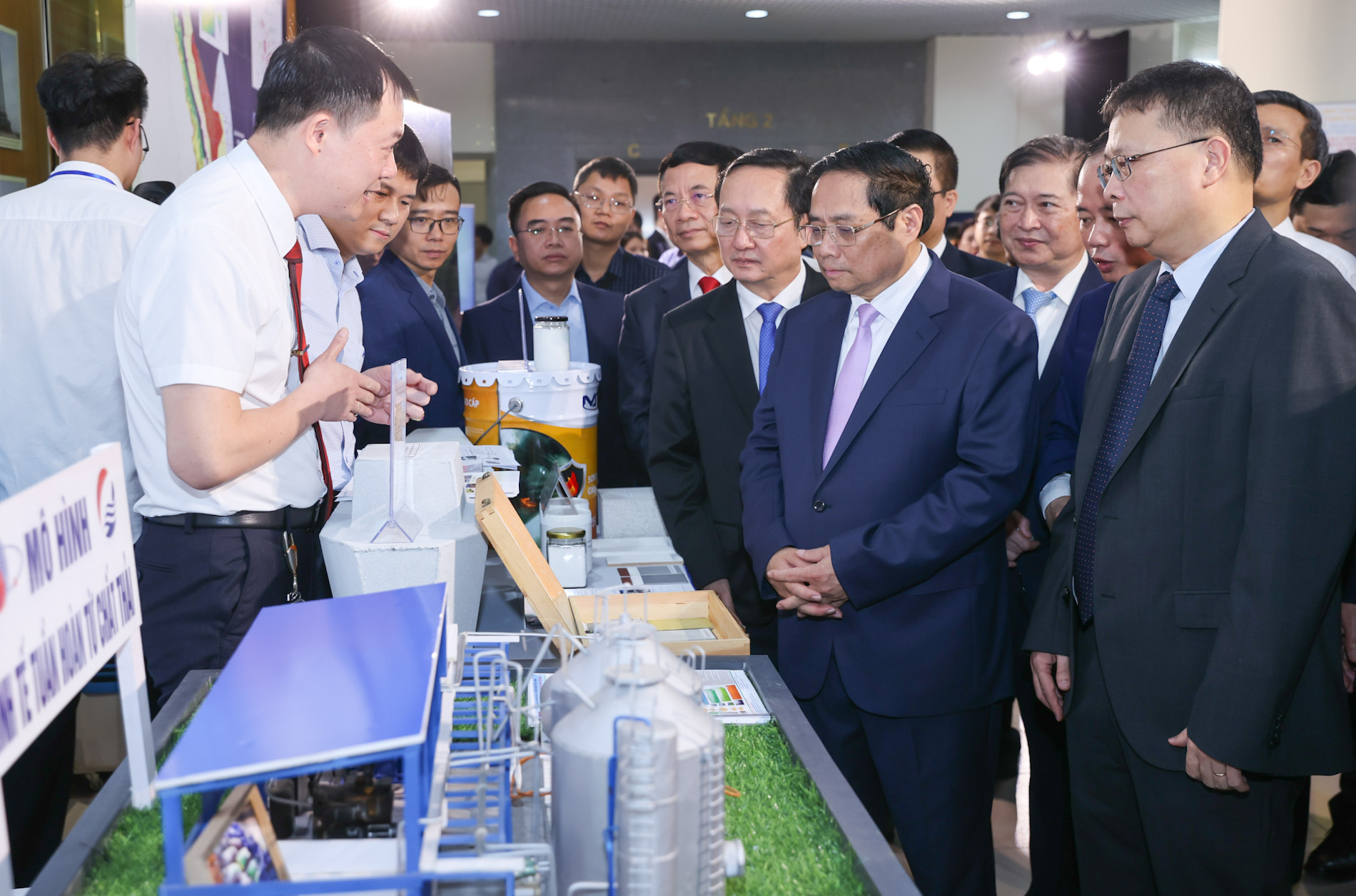
On December 22, 2024, General Secretary To Lam signed and issued Resolution No 57, setting up new goals for Vietnam: to be among the top three Southeast Asian countries and top 50 countries worldwide in digital competitiveness and e-Government development index by 2030; to be among the top three Southeast Asian countries in AI research and development; and to become the centers for certain high-tech industries where Vietnam has advantages, with at least five digital technology firms on par with advanced nations.
The government has just issued a resolution on the action plan to implement the resolution, mentioning seven tasks that need to be implemented.
Eliminating all thoughts, perceptions, and barriers hindering development
The government requires to heighten awareness, make a breakthrough in mindset, establish a strong political determination, and create new momentum and a new atmosphere throughout society for the development of science, technology, innovation, and digital transformation.
It mandates ministries, branches, and localities to build and issue regulations on the responsibilities of the heads of state agencies in charge of directing the implementation of tasks related to science, technology, innovation, and digital transformation at agencies and organizations, as well as the responsibilities of officials, civil servants, and public employees.
Another task set by the government is urgently and decisively completing institutional frameworks; eliminating all thoughts, perceptions, and barriers that hinder development; and turning institutional frameworks into a competitive advantage in the development of science, technology, innovation, and digital transformation.
The government has requested ministries, branches, and localities to review and remove institutional and policy barriers in science and technology development, innovation, digital transformation, and high-quality human resources.
Notably, it is necessary to develop and issue special mechanisms for public investment, public procurement, and purchases of products which are the results of scientific research and technological development to accelerate national digital transformation.
The government emphasizes the need to amend legal regulations to remove bottlenecks in science, technology, and innovation activities by accepting risks and promoting venture capital.
This includes the amendment of the Science and Technology Law (2013) and related laws within the framework of building a Science, Technology, and Innovation Law.
There are three key areas: removing difficulties and obstacles, creating favorable legal corridors to promote science, technology, and innovation; simplifying administrative procedures, and boosting decentralization in state management; and concentrating funding from the state budget and attracting non-budget investments for science, technology, and innovation.
Additionally, it is necessary to supplement policies to remove bottlenecks and complete the Digital Technology Industry Law; create mechanisms and preferential policies, and simplify administrative procedures for investments in science, technology, innovation, and digital transformation to attract and efficiently use all investment resources.
Furthermore, the government has also required strengthening investment and completing infrastructure for science, technology, innovation, and national digital transformation.
The goal is at least five projects or programs in the fields of semiconductors, AI, digital technology, smart factories, and smart cities to be implemented by 2030.
At the same time, it is necessary to build tax policies with incentives offered to purchasing, and leasing digital products and services; and create mechanisms and policies to support and encourage the establishment of laboratories, research and development centers.
STEM education
In the action plan, the government also emphasized the development and promotion of high-quality human resources and talents to meet the demands of scientific, technological, innovation and national digital transformation.
To do this, there should be policies that help discover and nurture STEM (Science, Technology, Engineering and Math) talents, and expand the system of schools for the gifted in natural sciences. The policies on scholarship and tuition remissions for STEM students and those who participate in programs on training cybersecurity engineers and on advanced materials with funding by the state budget.
The government has also requested programs on training engineers and talented people in basic sciences, engineering and key technologies.
Regarding the mechanism to attract the world’s leading tech giants to Vietnam, the government will offer incentives to investors that: manufacture and do business in the fields of Vietnam’s priorities; develop supporting industries; and have R&D centers in Vietnam with 1-3 percent of revenue.
Van Anh










